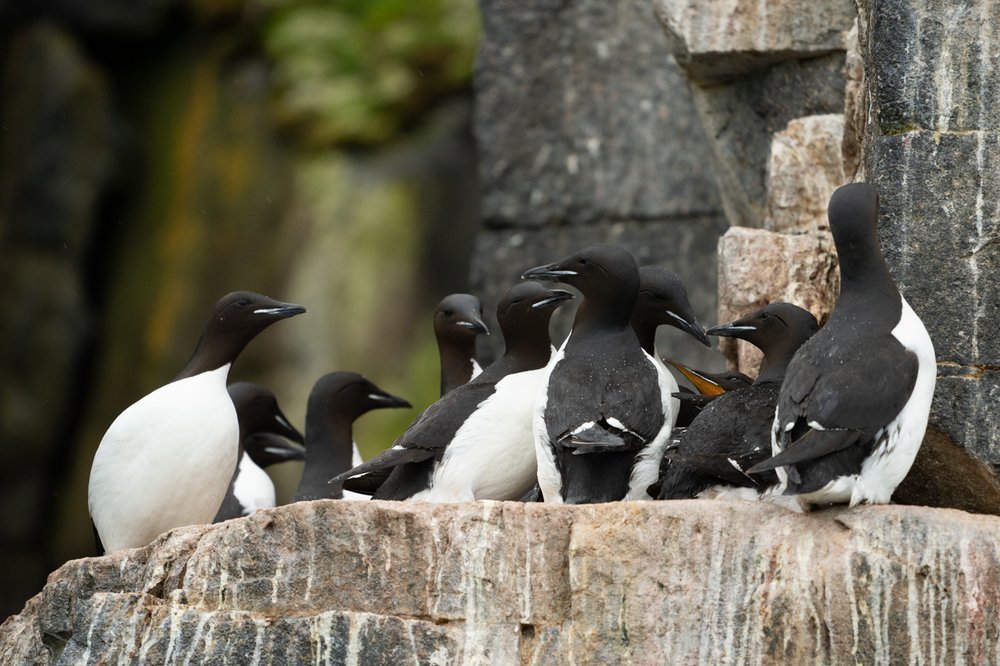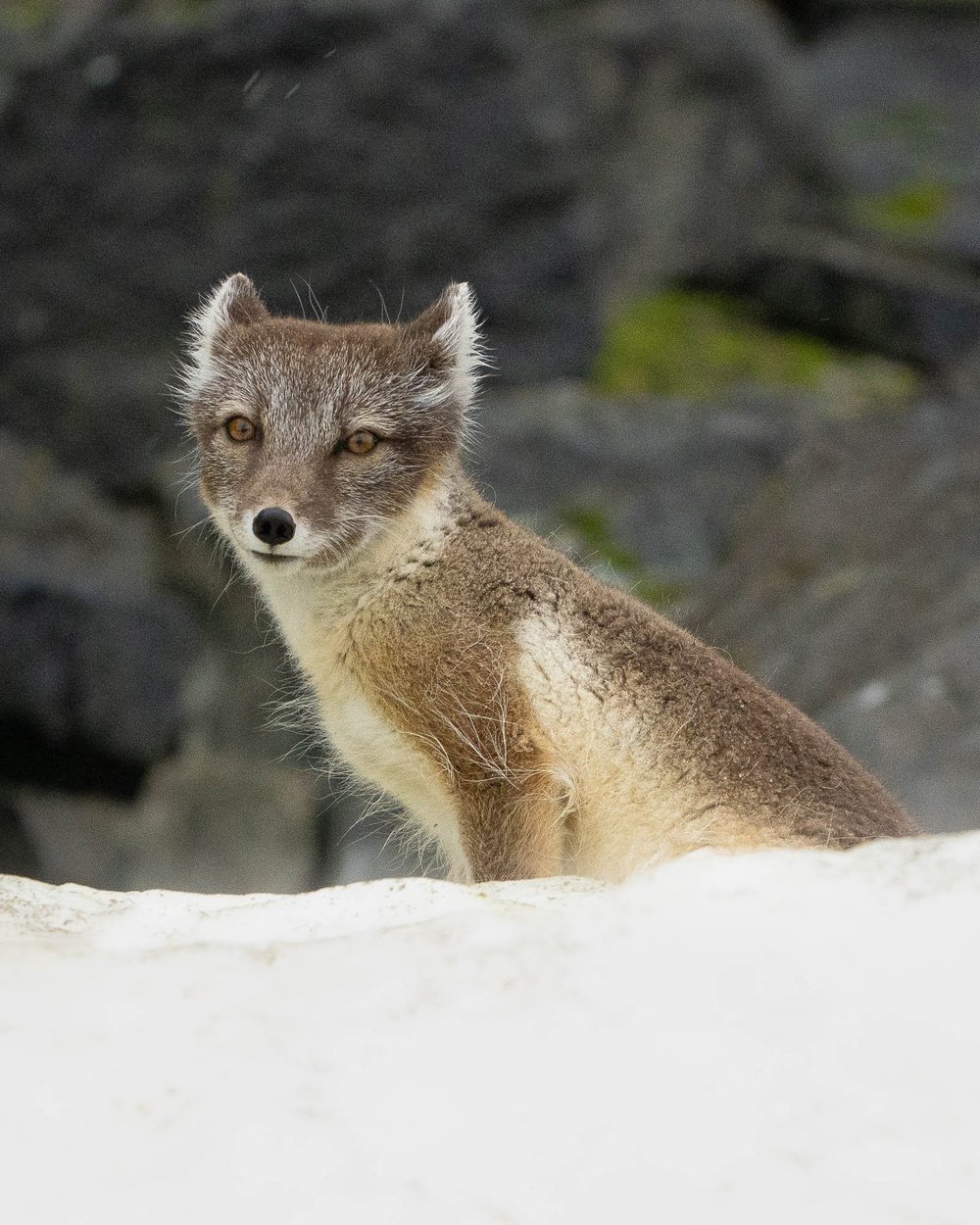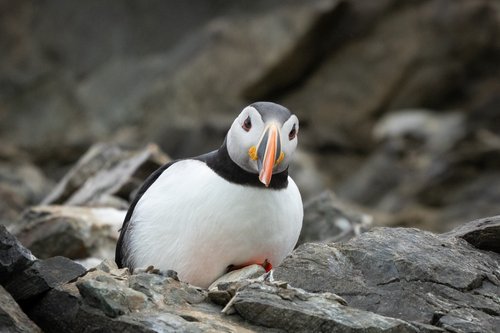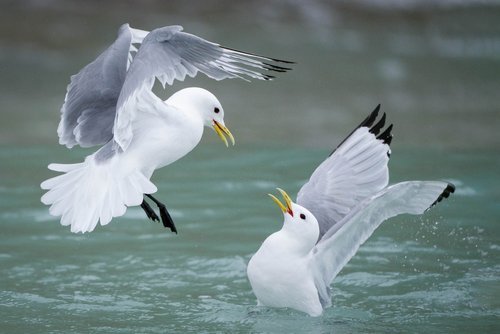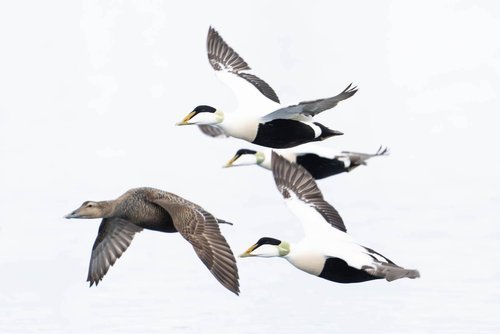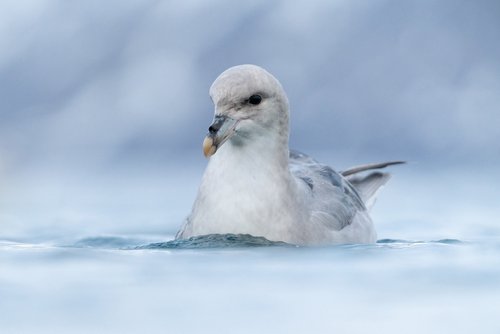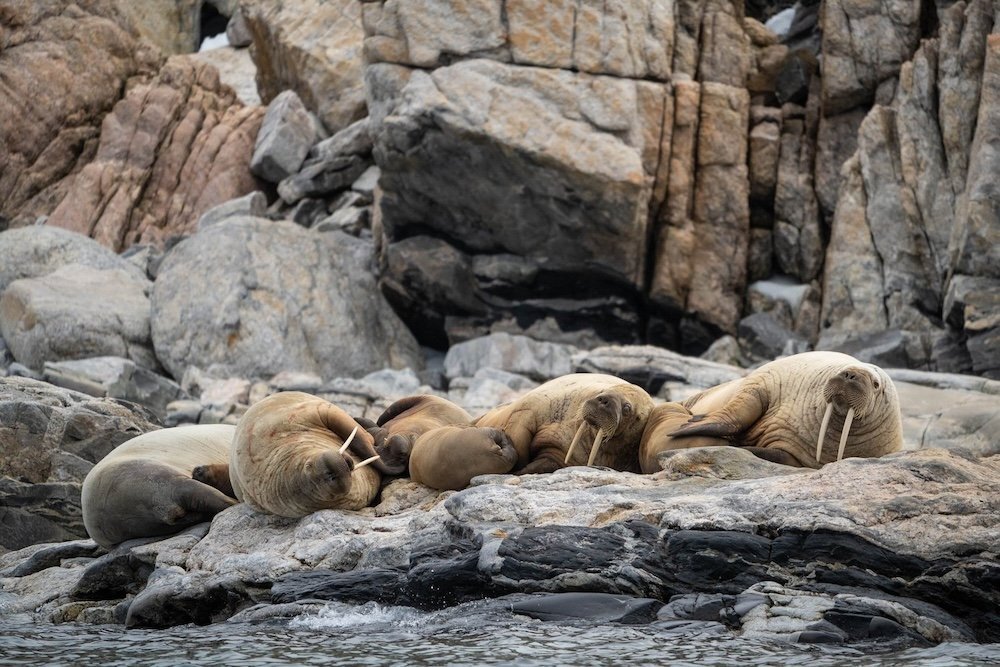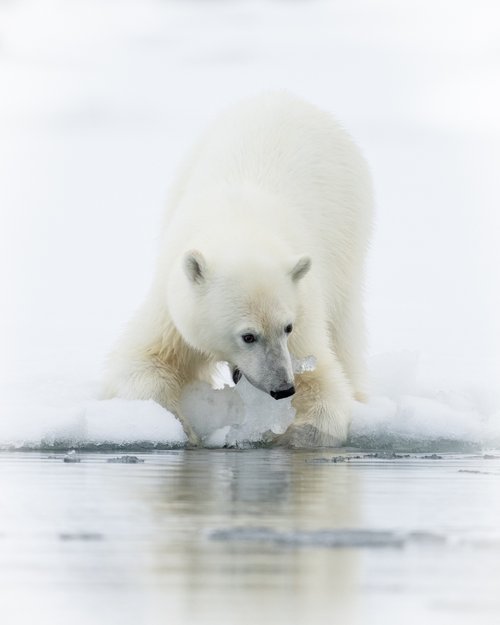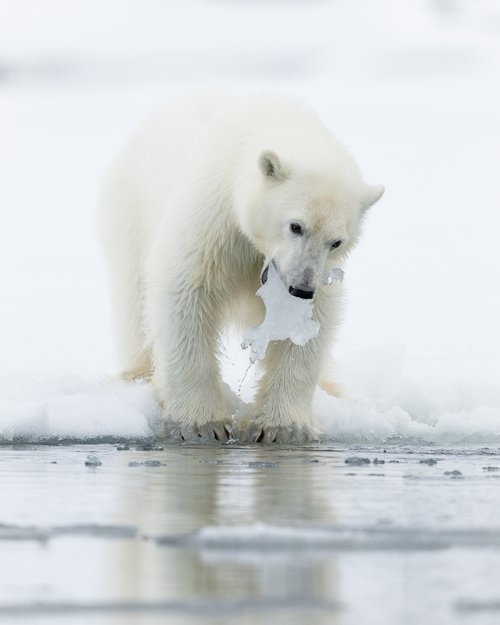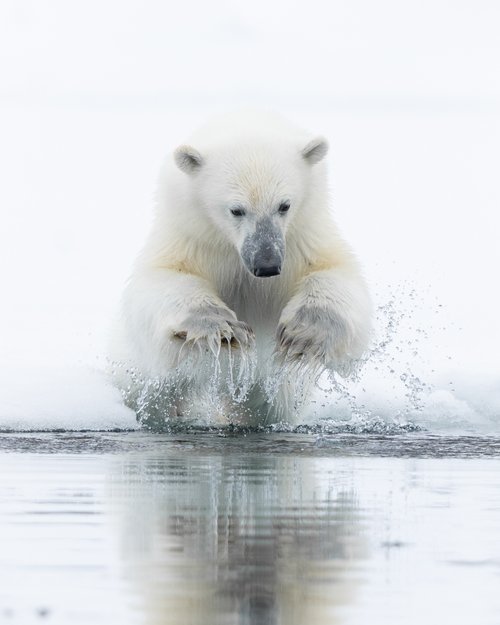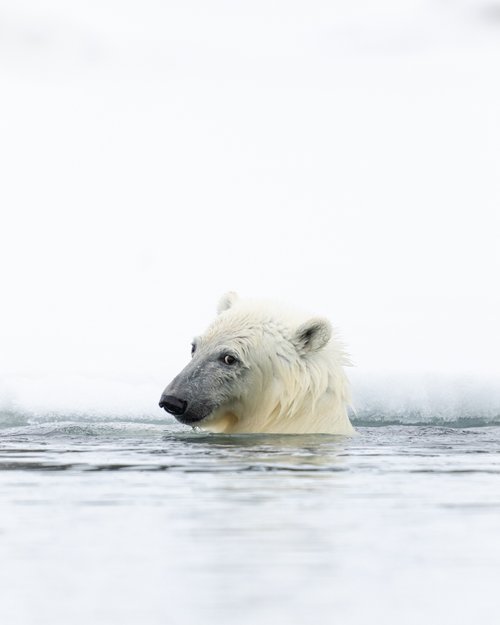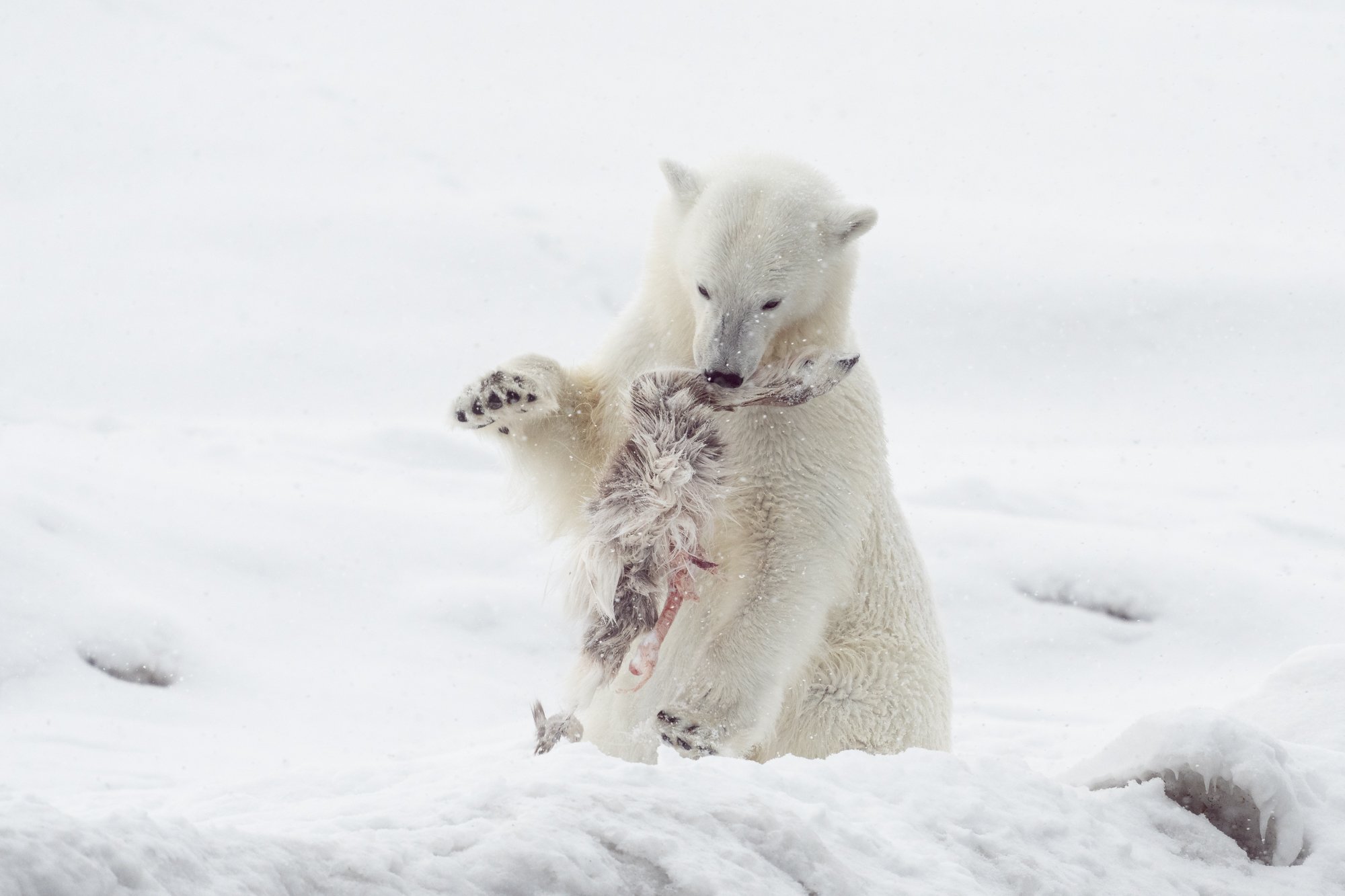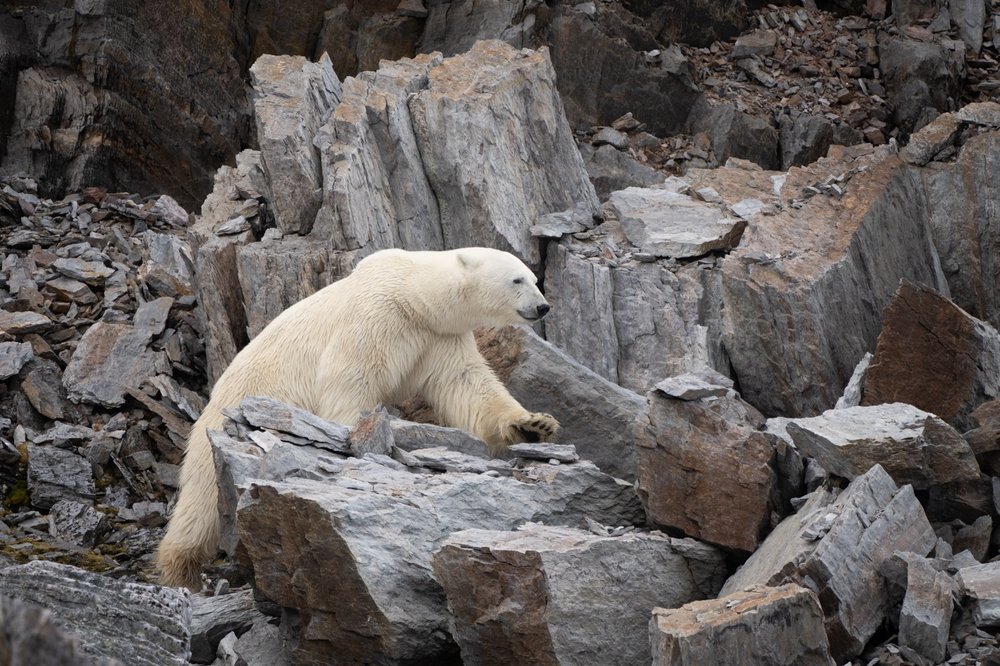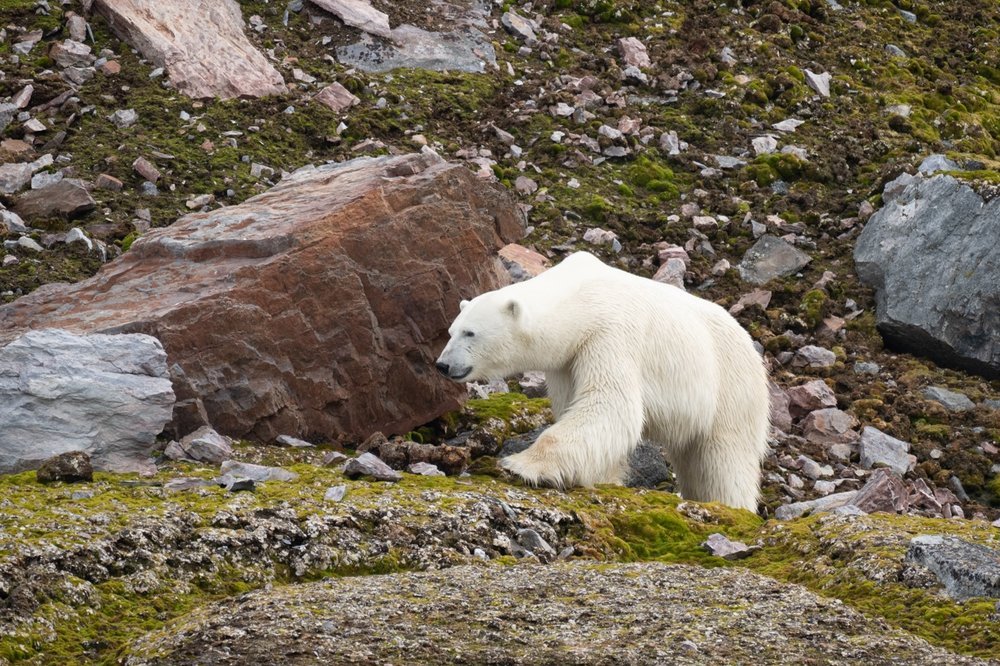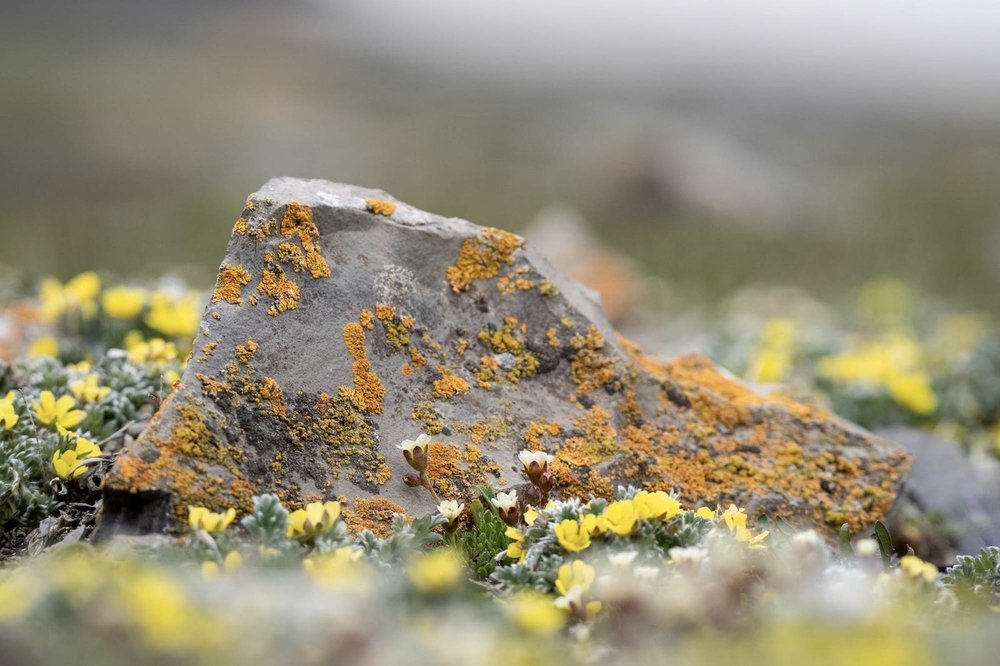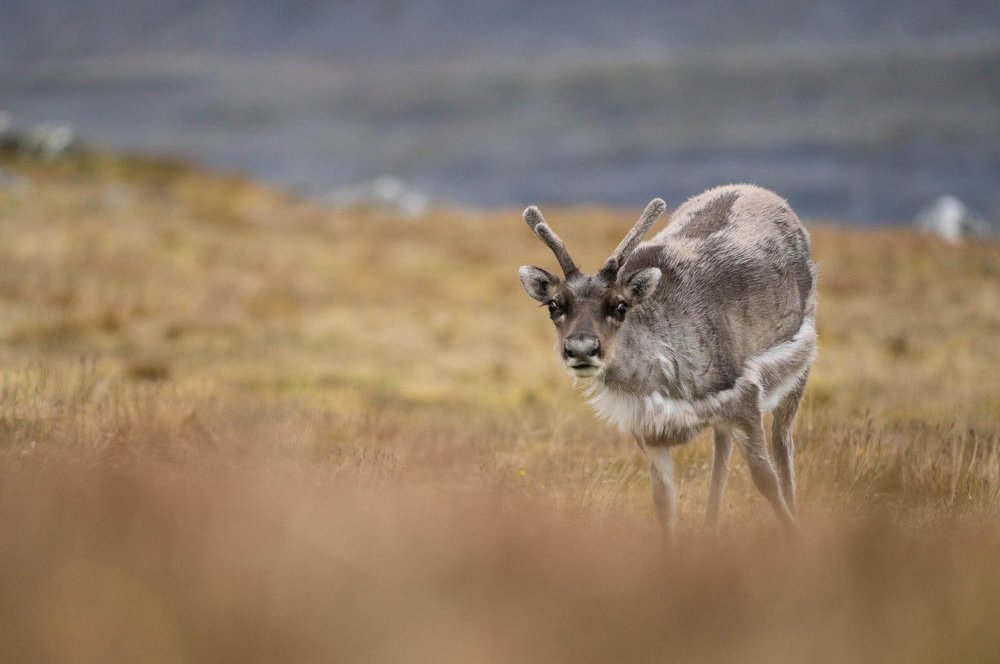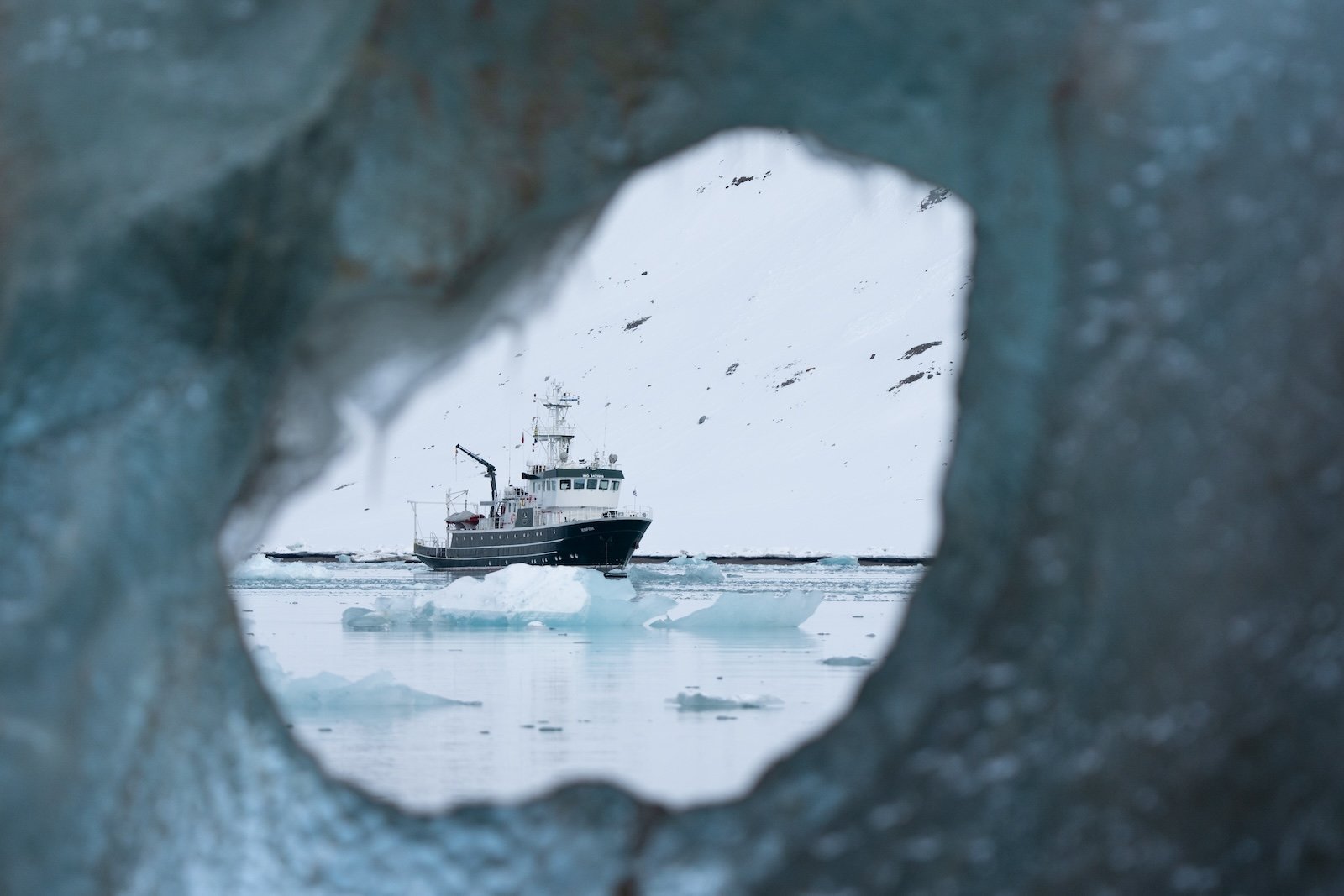SVALBARD
Svalbard is an archipelago in the Arctic Ocean situated roughly halfway between the northern coast of the Norwegian mainland and the North Pole. More than half of the mountainous archipelago is covered with glaciers. Svalbard is an important breeding area for many seabirds, and is also home to native populations of polar bear, Arctic fox, and reindeer. The nutrient-rich waters around Svalbard support a variety of marine mammals, from seals and walrus to the blue whale.
More than 200 species of birds have been recorded in Svalbard, and of these, around 40 are regular breeders. Seabirds such as thick-billed murres, Atlantic puffins, black-legged kittiwakes, and glaucous gulls jostle for coveted space along rocky walls, while Arctic fox scavenge below for fallen eggs and nestlings. In summer, fox lose their while winter pelage in favor of a more camouflaged look, making them very difficult to detect while hunting in rock fields. Common eider assemble in nearshore waters in the thousands by late spring, before moving ashore to breed.
The endemic Svalbard subspecies of the rock ptarmigan is the only truly terrestrial bird to remain in the archipelago year round. To manage this remarkable feat, the ptarmigan relies on insulating feathers and an unusually heavy layer of fat. Similar to the fox, both sexes trade their snowy white winter plumage for drabber summer plumage, though the male retains his winter whites for longer.
Walrus prefer to forage in relatively shallow coastal waters, often hauling out on ice to rest. They can also be found in shore. Sexes are generally segregated and calves will remain with their mothers for up to two years or more.
Bearded seals forage in bottom sediment for invertebrates, using their sensitive long whiskers to detect their prey. They are the largest of the true Arctic seals, and one of the most closely tied to the pack ice; their distribution is therefore somewhat variable by season and year. In Svalbard they are often found within fjord systems, even in summer.
Polar bears are most successful at feeding in winter and early spring, when they hunt for ringed seals among the floes and fast ice. Cubs emerge from the den at this time to seasonal abundance of ringed seal pups, and over time will master the skills needed to hunt them independently.
In late spring, as sea ice melts and retreats, many bears are pushed onto Svalbard's beaches and into valleys. In recent years, some have begun to specialize in hunting reindeer, a behavioral adaptation that appears to be a response to increasingly depleted sea ice.
By summer, food sources are generally reduced to bird eggs and nestlings, washed-up detritus and carcasses, and vegetation. It's a lean time for the bears, with activity constrained by heat and the need for energy conservation. When not foraging, bears are often found resting, with their sparsely-furred paws, muzzle, and groin area exposed to cooling breezes.
Whereas summer is a lean time for bears, it’s a time of growth and abundance for other life. Wildflowers spread across coastal planes, their height limited by harsh winds but their colors vibrant. Lichens bring more bright color, especially near nutrient-rich bird colonies. Reindeer fatten on the new growth, fending off the risk of winter starvation. Their thick winter coat is exchanged for a lighter version and their antlers, enveloped in velvet, begin to grow. Calves are born; spindly-legged at first, they quickly become adept at keeping up with the herd.
About 60% of Svalbard’s area is covered by glaciers, but these glaciers are under threat. The Arctic is warming at a much faster rate than more equatorial regions, leading to less snowfall and more melting of ice and permafrost. This warming has broad-reaching consequences not just for glaciers, but for all life.



